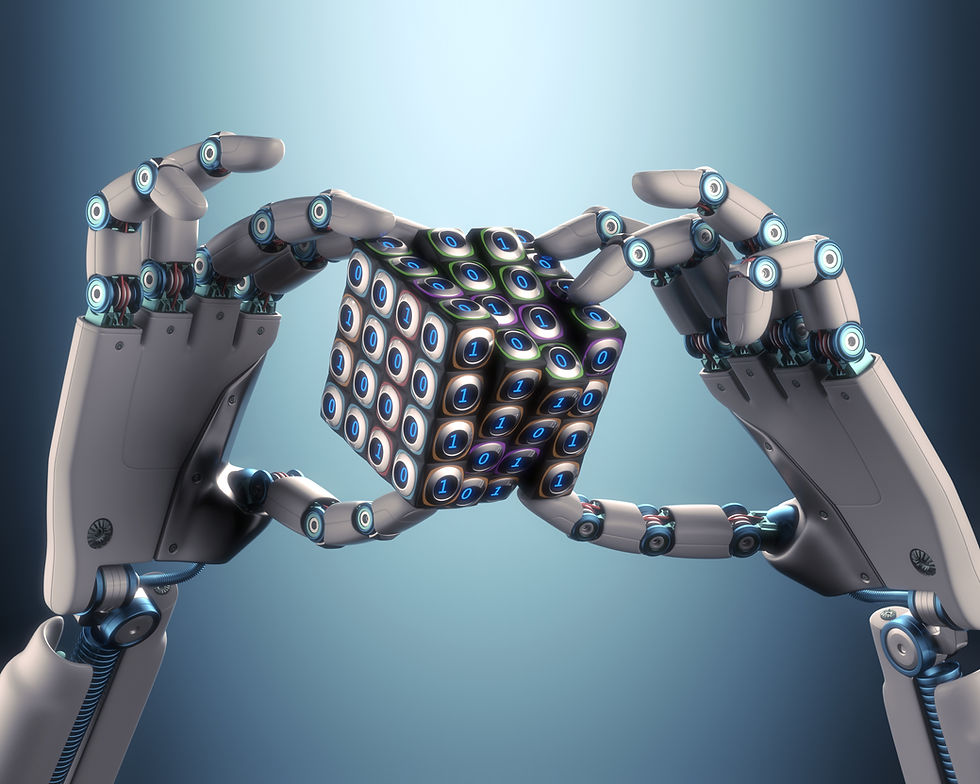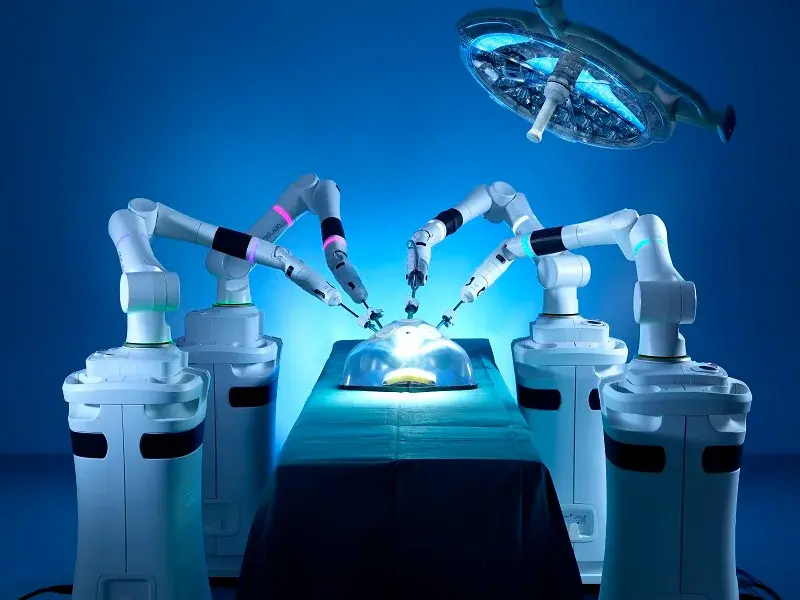Machine Learning (ML) Form & Function
- Sylvia Rose

- Apr 9
- 5 min read
Machine learning teaches computers to learn from data without being programmed. A branch of artificial intelligence, ML enables computers to improve performance by learning from the data they process.

When an ML algorithm is exposed to a dataset of images labeled peaches or pears, it learns to differentiate. By adjusting internal parameters, the algorithm gets more precise over time, increasing accuracy in classifying new, unseen images.
It can identify differences in types of peaches or pears, and group them according to seasonal availability, shipping costs, other relevant factors. Based on data in these sectors it can create a profit-and-loss scenario.
Machine learning algorithms identify patterns and improve accuracy as they're exposed to more data. Algorithms are the learning processes, data is teaching material and outputs are predictions or decisions.

Data
Data powers machine learning. It can be images, text, numbers or sensor readings. The more data available, the better the algorithm learns.
Data comes from sources such as online databases or real-time transactions. It's obtained on the internet by web scrapers, tools which copy all the contents of multiple websites within nanoseconds.
For instance a financial institution may gather transaction records of thousands of customers to identify spending patterns. Data farming is now bigger than ever.
Data preprocessing cleans and prepares the data. This step is for removing duplicates, handling missing values, and normalizing numerical data. Poor data preprocessing degrades model performance.

Algorithms
Once data is prepped, different algorithms are applied to understand patterns and relationships in the dataset. During this phase, the algorithm learns by adjusting its parameters according to its predictions.
For instance, decision trees may be used to classify whether a customer will repay a loan or not, based on historical data regarding demographics and credit scores. The customer is judged by the machine.
Prediction/Decision
This is the final output of the machine learning process. It could be predicting whether an email is spam, classifying an image, recommending a product or denying a loan.

Types of Machine Learning
Supervised Learning
The algorithm learns from labeled data, meaning the data has pre-defined categories or outcomes. Examples include predicting house prices based on historical data or classifying emails as spam or not spam.
Unsupervised Learning
The algorithm learns from unlabeled data, meaning the data doesn't have pre-defined categories. Examples include clustering customers into different segments or identifying hidden patterns in social media data.
Retailers may use machine learning algorithms to analyze purchasing behaviors, and group customers into distinct categories and numbers based on patterns.

Reinforcement Learning
The algorithm learns by interacting with an environment and receiving rewards or penalties for its actions. It's used in gaming and robotics, where the goal is to learn the optimal strategy to achieve a specific objective.
In reinforcement learning an agent learns to make decisions by interacting with its environment and receiving feedback. Feedback is by rewards or penalties.
"Rewards" are like switches turned on when a task is completed or a correct decision made toward achieving a goal. This type of learning is used in robotics and game development.

Uses of Machine Learning
Automate repetitive tasks: Automate tasks traditionally done by humans, freeing up time and resources, and saving the company money.
Make better and faster decisions: Analyze vast amounts of data to identify patterns and insights that humans might miss, and get rid of factors judged to be redundant or unnecessary.
Personalize experiences: Tailor products and services to meet individual needs and preferences, a feat apparently impossible for humans.
Solve complex problems: Solve problems too complex for traditional programming approaches. For instance, ML is used in cryptocurrency decoding by "miners," usually large organizations with powerful computers.

Machine Learning in Action
Recommendations: Machine learning algorithms analyze viewing history to recommend movies and TV shows you might enjoy. It can and does backfire splendidly.
Personal experience: looking at a news article on grizzly bears being killed due to human idiocy results in a slew of horrifying and unwanted articles on animals being killed or abused, continuing for days.
An algorithm goes by what it "thinks" the viewing victim wants. It's important to give viewers an option; for instance the news reader has no option for turning off the subject matter, just the news source. This allows the barrage to continue, but from different sources.
Spam Filters: Machine learning algorithms identify spam emails based on patterns and characteristics. This is decades old and the results pretty much stay the same, but so does the spam.

Self-Driving Cars: Machine learning algorithms use sensor data to navigate roads and avoid obstacles.
Fraud Detection: Machine learning algorithms identify fraudulent transactions by analyzing patterns in financial data. Fraudsters also have all the right info, collected by their own ML agent.
Medical Diagnosis: Machine learning algorithms help diagnose diseases by analyzing medical images and patient data. Algorithms can predict outcomes, assist in diagnoses and attempt to personalize treatment.
Machine learning improves commercialism and retail by optimizing inventory management. Algorithms predict sales trends so retailers can stock products most likely to sell.

Problems of Machine Learning
Data Privacy
As machine learning relies on large datasets, data privacy concerns continue to grow. Companies assure privacy while at the same time milking all possible data from customers (for their own protection).
Interpretability
Many machine learning models like deep learning algorithms are too complex for users to know how decisions are made. This can be a problem in for sectors where explanation and transparency are necessary, such as healthcare.

Misinterpretation
Personal experience
Ask AI: How far is Uruk (an ancient Mesopotamian city) from the Tigris River?
AI: Uruk is not on the Tigris River. It is on the Euphrates.
I know this but want to find out how far it is from the nearby Tigris. The Tigris and Euphrates rivers form the Mesopotamian Fertile Crescent and vary in distance apart, especially over time.
Trying a different approach: What is the geographical distance between ancient Uruk and the Tigris River?
AI: Uruk is not on the Tigris River. It is on the Euphrates.
Fine, I have an atlas. Applied to something important, such as financial information, this can cause havoc as ML decides for itself what is valid.
Bias in Data
Machine learning can learn biases embedded in training data. If the provided data reflects historical inequalities, the model may perpetuate these biases.

READ: Lora Ley Adventures - Germanic Mythology Fiction Series
READ: Reiker For Hire - Victorian Detective Murder Mysteries


